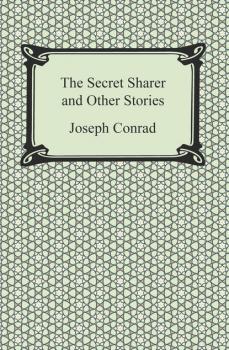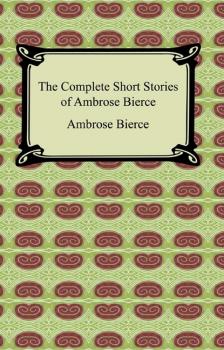Публицистика: прочее
Различные книги в жанре Публицистика: прочееConjure Tales and Stories of the Color Line
Charles W. Chesnutt (1858-1932) was an author, essayist and political activist whose works addressed the complex issues of racial and social identity at the turn of the century. Chesnutt's early works explored political issues somewhat indirectly, with the intention of changing the attitudes of Caucasians slowly and carefully. His characters deal with difficult issues of miscegenation, illegitimacy, racial identity and social place. They also expose the anguish of mix-race men and women and the consequences of racial hatred, mob violence, and moral compromise. «Conjure Tales and Stories of the Color Line» is a collection of eighteen short stories that have a deep moral purpose mixed with elements of magic and conjuring. Included in this collection is Chesnutt's first published short story, «The Goophered Grapevine». It is set in «Patesville» (Fayetteville), North Carolina and is a story within a story in which each story is told by a different narrator. Also in this collection among many others is «The Conjurer's Revenge» that depicts Uncle Julius duping John into buying an old, useless horse.
The Secret Sharer and Other Stories
All of author Joseph Conrad's works have an air of loneliness and isolation within the plot. This is now thought to be reflective of the author's life as a Polish immigrant living and writing at the height of the British Empire. His prose strikes a chord that resonates deep within the reader, leaving a feeling of immense despondency. Yet with his deep affinity for the melancholy, Conrad was also a highly skilled prose writer. His words allow the reader to become lost in whatever world Conrad created. He wrote at the turn of Romanticism and Modernism, which created a very unique form of writing. Conrad drew inspiration from the Impressionistic painting style; he explored just enough of the light to let the darkness make itself apparent. This can be seen within the works contained in «The Secret Sharer and Other Stories.» «The Secret Sharer» is a maritime story about a captain who takes a murderer under his wing while out at sea. Conrad drew from his own experiences as a long-time sea captain to make the story as real and vivid as possible. «Youth: A Narrative» is an autobiographical short story about a young sailor whose ship sinks while on a voyage to Thailand. «Typhoon» is one of Conrad's novels which also depicts the sea life. The main character, Captain MacWhirr, decides to sail his vessel through a typhoon in the South Pacific, much to the protest of his ship. Yet his bold action earns him the admiration of the rest of his crew. Readers will enjoy the reality of these works, as well as the adventure and drama of the tales.
The Duel and Other Stories
Anton Chekhov (1860-1904) was a master of the short story. The son of a former serf in southern Russia, he attended Moscow University to study medicine, writing short stories for periodicals in order to support his family. What began as a necessity became a legitimate career in 1886 when he was asked to write in St. Petersburg for the Novoye Vremya (New Times), owned by millionaire magnate Alexey Suvorin. Chekhov began paying more attention to his writing, revising and developing his own principles and conceptions of truth, for a time coming under the influence of Leo Tolstoy. As a result of his widespread popularity, Chekhov amassed a vast collection of short stories displaying an early use of stream-of-consciousness writing, as well as his powerful ideas concerning the individual, the tedium of life, and the beauty nature and humanity. This edition contains «The Duel», «Excellent People», «Mire», «Neighbors», «At Home», «Expensive Lessons», «The Princess», and «The Chemist's Wife».
How Much Land Does a Man Need? and Other Stories
In this collection, «How Much Land Does a Man Need? And Other Stories,» Russian born Leo Tolstoy (1828-1910) demonstrates his varied subject matter and style in his shorter fiction. In the title piece, «How Much Land Does a Man Need?,» Tolstoy explores this very question through the story of a peasant with an increasing appetite for land. In «What Men Live By,» the humble shoemaker Simon sets out to collect money to pay for new coats for the family. «A Spark Neglected Burns the House» is a parable examining the process of reconciliation. Also included are «Two Hussars,» «Where Love is,» «God Is,» «Two Old Men,» and «A Prisoner in the Caucasus,» some of Tolstoy's finest early work. Though Tolstoy is widely known for «War and Peace» and «Anna Karenina,» considered two of the greatest novels in world literature, his short stories remain valuable classics in their own regards.
The Lady With the Dog and Other Stories
A classic collection of short stories from one the greatest short stories writers of all-time, Anton Chekhov. «The Lady with the Dog and Other Stories» includes the following tales: The Lady With the Dog, A Doctor’s Visit, An Upheaval, Ionitch, The Head of the Family, The Black Monk, Volodya, An Anonymous Story, and The Husband.
The Best Short Stories of Fyodor Dostoyevsky
After a brief military career, the illustrious Russian author Fyodor Dostoyevsky quickly turned to writing as a profession with the publication of his first novel, «Poor Folk,» in 1846. This novel sparked a literary career that would eventually cement Dostoyevsky's reputation as one of the greatest novelists of the nineteenth century. Early participation in a literary/political group landed the writer in exile in Siberia for nearly a decade, an experience which had a profound influence on Dostoyevsky's understanding of fate, the suffering of human beings, and resulted in a powerful religious conversion experience. Dostoyevsky's works are marked by his penetrating exploration of psychology and morality, which are today cited as highly 'existentialist.' This definitive collection of Dostoyevsky's short stories includes: White Nights, An Honest Thief, A Christmas Tree and a Wedding, The Peasant Marey, Notes From Underground, A Faint Heart, and The Dream of a Ridiculous Man.
The Complete Short Stories of Ambrose Bierce
American journalist and satirist Ambrose Bierce is probably best known for his short stories about the American Civil War. The author's craft for story-telling is exemplified by his famous «An Occurence at Owl Creek Bridge», which is the story of Peyton Farquhar, a Confederate sympathizer condemned to die by hanging upon the Owl Creek Bridge. That great short story along with 96 others forms this exhaustive edition of «The Complete Short Stories of Ambrose Bierce.»
Sketches from a Hunter's Album (A Sportsman's Sketches)
Generally thought to be the work that led to the abolishment of serfdom in Russia, «Sketches from a Hunter's Album (A Sportsman's Sketches)» is a series of short stories, written in 1852, that gained Turgenev widespread recognition for his unique writing style. These stories were the result of Turgenev's observations while hunting all over Russia, particularly on his abusive mother's estate at Spasskoye. A definitive work of the Russian Realist tradition, this collection of sketches unveils the author's insights on the lives of everyday Russians, from landowners and their peasants, to bailiffs and mournful doctors, to unhappy wives and mothers. Turgenev captures their tragedies and triumphs, losses and love in a set of stories that condemned the behavior of the ruling class. Considered subversive writing, Turgenev was confined to his mother's estate, yet his «Sketches» opened the eyes of many people of his time, proving him not only an artist but also a social reformer whose abilities ultimately affected the lives of countless Russians.
The Unknown Masterpiece and Other Stories
One of the fathers of Realism was the famed 19th century French writer Honore de Balzac. His works are best known for their shrewd, yet honest, interpretation of real life problems within the social classes of French society. He believed that explaining a character would not inform the reader about the character's personality; however, describing their home, possessions, and other details would tell the reader about the character's true nature. With that in mind, he wanted to mold his characters to be as realistic as possible. He did not rely on outdated tropes and stereotypes. His characters were neither wholly good nor wholly evil. Instead, they were motivated by their own personal interests and believed that they were truly doing the right thing. The most famous set of stories that he wrote are known as «La Comedie Humaine,» or «The Human Comedy.» The tales follow various characters throughout their lives in France. The story «The Unknown Masterpiece» is the tale of a painter looking for a model for his upcoming masterpiece. When the man finally finds a suitable woman to serve as the subject, he completes the painting almost immediately. Yet it is impossible to distinguish whether the painter is a genius or just mad, as the painting is only of a foot amidst a swirl of colors. Readers will be both entertained and informed by this and other tales in this collection of Balzac's stories.
The Celtic Twilight
Born and educated in Dublin, Ireland, William Butler Yeats (1865-1939) discovered early in his literary career a fascination with Irish folklore and the occult. Later awarded the Nobel Prize for Literature in 1923, Yeats produced a vast collection of stories, songs, and poetry of Ireland's historical and legendary past. «The Celtic Twilight» includes forty-two Celtic folklore tales, and Yeats makes no secret of his fascination and even belief in the world of the occult and the existence of faeries. Yeats' passion in these tales comes forth through the pages and adds a new dimension to these age-old tales. Though the stories are short in length, there is no scarcity of depth.









